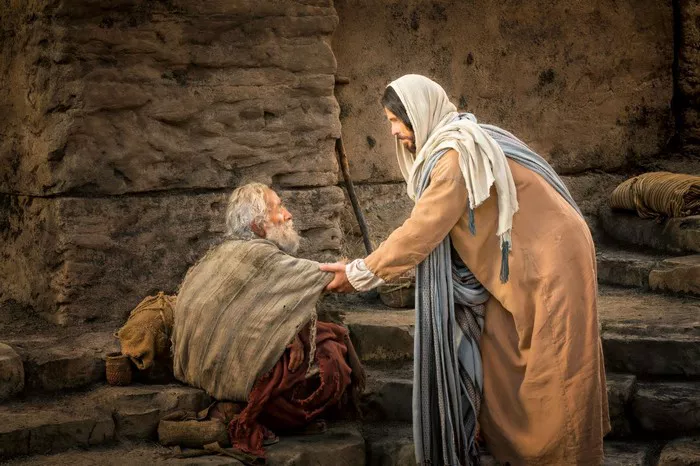The miracles performed by Jesus Christ, as documented in the New Testament, continue to inspire and captivate believers and scholars alike. Among these miracles, the healing of the blind holds particular significance, symbolizing not only physical restoration but also spiritual enlightenment. Throughout the Gospels, accounts of Jesus healing the blind are recorded, but the exact number of occurrences may vary depending on interpretation and scholarly analysis. In this article, we will delve into the biblical accounts to provide a precise answer to the question: How many times did Jesus heal the blind?
Healing the Blind in the Synoptic Gospels
The Synoptic Gospels—Matthew, Mark, and Luke—offer parallel narratives of Jesus’ life and ministry, including his miraculous healings. In these accounts, multiple instances of Jesus restoring sight to the blind are documented.
Bartimaeus in Jericho (Mark 10:46-52; Matthew 20:29-34; Luke 18:35-43): Perhaps the most well-known instance of Jesus healing the blind is the story of Bartimaeus, a blind beggar, who calls out to Jesus for mercy as he passes through Jericho. Jesus responds to his plea, asking what he wants. Bartimaeus requests to receive his sight, and Jesus, acknowledging his faith, restores his vision instantly.
Two Blind Men in Galilee (Matthew 9:27-31): Matthew recounts another incident where Jesus encounters two blind men who follow him, crying out for mercy. Jesus enters a house, and the blind men are brought to him. He touches their eyes, affirming their faith, and they are healed, warned not to let anyone know about it.
A Blind Man in Bethsaida (Mark 8:22-26): Mark describes an encounter where Jesus heals a blind man in Bethsaida. Initially, Jesus spits on the man’s eyes and lays his hands on him. The man’s vision is partially restored, seeing people as trees walking. Jesus then touches his eyes again, and the man’s sight is fully restored.
Healing the Blind in the Gospel of John
The Gospel of John provides a unique perspective on Jesus’ ministry, often emphasizing spiritual themes and presenting distinct miracles not found in the Synoptic Gospels. While some healing accounts overlap with the Synoptics, John includes additional instances of Jesus restoring sight to the blind.
The Man Born Blind (John 9:1-41): John records an extensive narrative where Jesus heals a man who was born blind. Unlike other accounts, this miracle unfolds in stages, sparking controversy and theological debates among the Pharisees. Jesus uses mud made with saliva to anoint the man’s eyes and instructs him to wash in the Pool of Siloam. Upon obeying Jesus’ command, the man’s sight is fully restored, leading to a profound spiritual transformation.
Interpretive Considerations and Harmonization
Scholars and theologians have grappled with harmonizing the various accounts of Jesus’ miracles, including those of healing the blind. Some view the differences in the Gospel narratives as complementary, emphasizing the richness of the Gospel tradition rather than discrepancies. Others propose harmonization techniques to reconcile apparent contradictions.
Harmonization: Harmonization involves reconciling seemingly conflicting accounts by considering the perspectives and emphases of each Gospel writer. For instance, some scholars suggest that the healing of Bartimaeus could be the same event as the healing of the blind men in Matthew 9:27-31, with variations in details and focus. Similarly, the healing in Bethsaida (Mark 8:22-26) may be seen as a distinct event or a variant retelling of a similar miracle.
Symbolism and Theological Significance: Beyond historical and textual analysis, the healing of the blind holds profound symbolism in Christian theology. It represents more than physical restoration but also spiritual enlightenment and salvation. The gradual restoration of sight in Mark 8:22-26, for example, can be interpreted allegorically as a metaphor for spiritual insight and understanding.
Conclusion
In conclusion, while the exact number of times Jesus healed the blind may vary depending on interpretive perspectives and harmonization efforts, the Gospels collectively bear witness to multiple instances of this miraculous act. Whether it is Bartimaeus receiving sight in Jericho, the dramatic healing of the man born blind in John 9, or other accounts found in the Synoptic Gospels, these miracles serve as powerful demonstrations of Jesus’ compassion, power, and divine identity. Moreover, they invite believers to contemplate the deeper spiritual significance of seeing with eyes of faith and experiencing the transformative power of encountering the Son of God.
Through careful study and reflection on these biblical accounts, Christians continue to find inspiration and encouragement in the miraculous works of Jesus, recognizing him as the ultimate healer who brings light to the darkest corners of human existence.
As believers engage with the question of how many times Jesus healed the blind, they are reminded not only of the historical events recorded in the Gospels but also of the ongoing spiritual reality of Jesus’ healing ministry in the lives of individuals and communities today.


